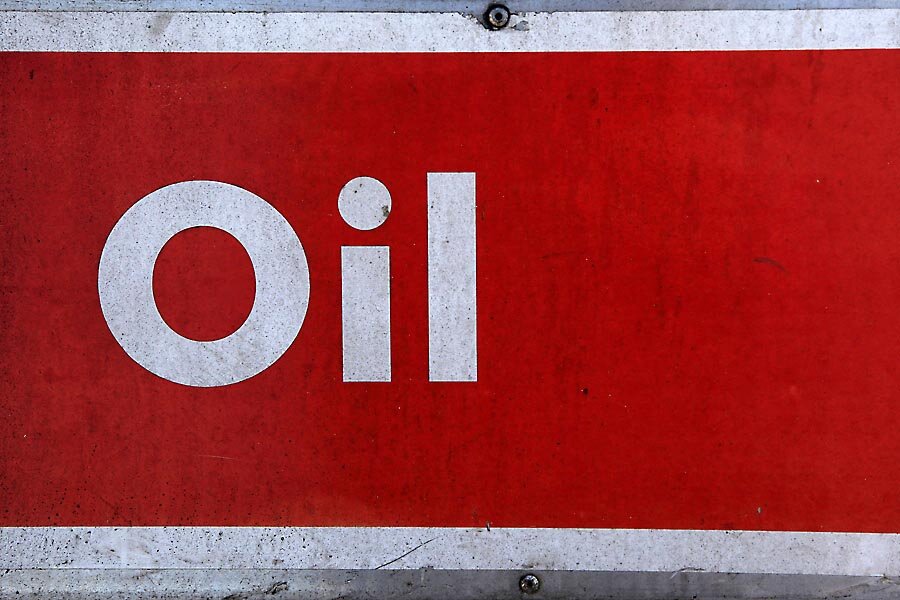Energy in 2015: Cheap oil changes everything [Recharge]
Loading...
The Monitor's Recharge energy digest delivers the big ideas in global energy to your inbox every Saturday. Subscribe for free.
A year ago today, few would have predicted a collapse in oil prices would be the biggest energy story of 2014. Pinpointing next year’s equivalent is just as unlikely. Still, we can at least consider what to watch worldwide in one of the most dynamic, unpredictable, and misunderstood industries. Whatever happens in 2015, these five trends will shape the year ahead in global energy.
Oil change
The oil crash fallout will continue worldwide throughout at least the first half of 2015. US shale production growth will slow, perhaps even pause. OPEC will feel mounting existential threats, and may eventually have to cut production. Strapped for cash, more vulnerable petro states like Nigeria and Venezuela will curtail inefficient, regressive fuel subsidies. The effect on price could go either way.
“On one hand, it could bring down demand,” says Brenda Shaffer, a professor at Georgetown University’s Center for Eurasian, Russian and East European Studies in Washington. “But on the other hand, it might cause domestic instability, which could bring production offline.” Across the globe, nearly $1 trillion in future oil projects are at risk, according to Goldman Sachs.
Politics and power
Just as the US shale boom’s economic realities hit a bump, its political prospects brighten. The rising oil-and-gas superpower’s energy policy gets a whole new look once Republicans take the reins of the US Congress in January. There will be quick action to approve the Keystone XL pipeline, expand LNG exports, peel back the oil export ban, and water down the EPA’s Clean Power Plan. Not all of these efforts will succeed – President Obama still holds veto power – but the predominant tone on Capitol Hill will be a far cry from Democrats’ muted, uneasy support for the domestic oil and gas boom. That means some backsliding on climate progress, and much consternation in Moscow, Riyadh, Caracas, and other petro capitals.
City of (LED) lights
A mixed-batch preparation likely makes for a mixed-batch result.December’s Lima climate talks made progress over previous negotiations, but failed to surmount many of the longstanding divides that thwart coordinated action toward a global low-carbon economy. The Green Climate Fund met its initial fundraising goal, but remains woefully insignificant relative to what’s needed for sustainable development. It would take a lot for the Paris talks to be anything more than what Lima was – optimism, dragged down by reality, resulting in mixed success. Even if a bold, ambitious accord is reached, whether countries follow through on it is another question entirely.
Nuclear’s next generation
Advanced nuclear technologies are generating a lot of buzz as a young crop of engineers and scientists find new solutions to some of nuclear’s most vexing challenges. Some of the supposed “low-waste,” “meltdown-proof” technologies will prove too good (or too expensive) to be true, but safer iterations of nuclear will look increasingly attractive as the climate challenge becomes more pressing and the limits of energy-diffuse, intermittent renewables become more apparent. Next year isn’t going to see a nuclear construction spree (unless you’re China), but there should be a lot happening in research and development. China will likely lead on that front, too: “[A]s part of installing Generation 3 [nuclear] reactors, I’m sure that China will want to licence the technology and ultimately be able to export it themselves,” notes Stephen O’Sullivan, director of emerging markets energy research for Trusted Sources, a London-based consultancy.
Lightning in a bottle
As wind and solar power generation continues to rise dramatically, the renewables challenge will become less about deployment and more about management. Advanced batteries and grid-level storage offer one solution, and are already quietly getting a lot of attention. The solar industry expects demand for rooftop photovoltaics paired with batteries to reach $1 billion in the US by 2018. Sooner rather than later many residential consumers will find they can meet most, if not all, of their electricity needs without a centralized power system. On the transportation side, Tesla Motors’ gigafactory is bringing advanced battery production to an unprecedented scale. It’s not expected to start production until 2016, but it will give utilities, carmakers, and the energy industry plenty to consider about between now and then.
The Monitor's Recharge energy digest delivers the big ideas in global energy to your inbox every Saturday. Subscribe for free.








